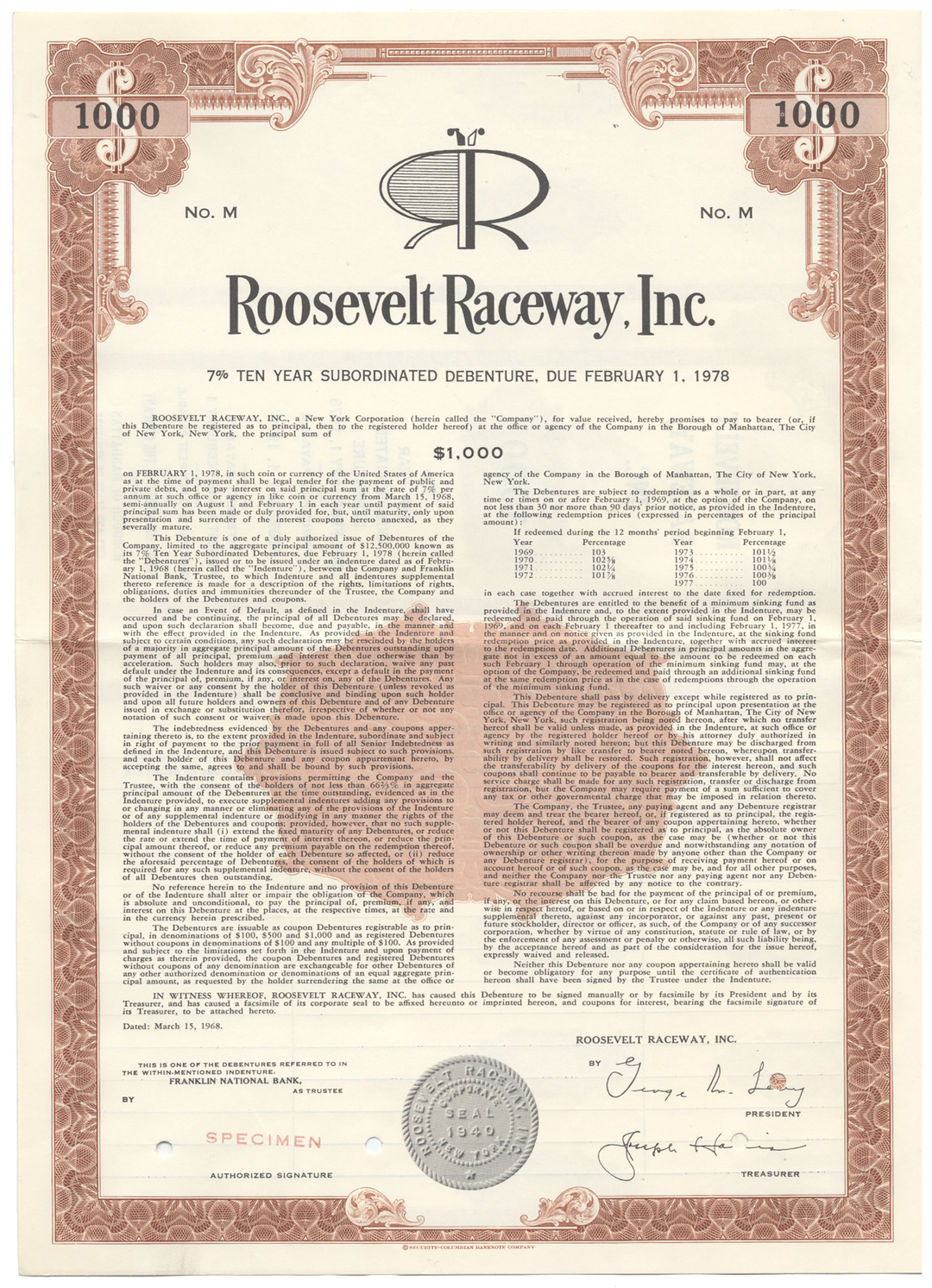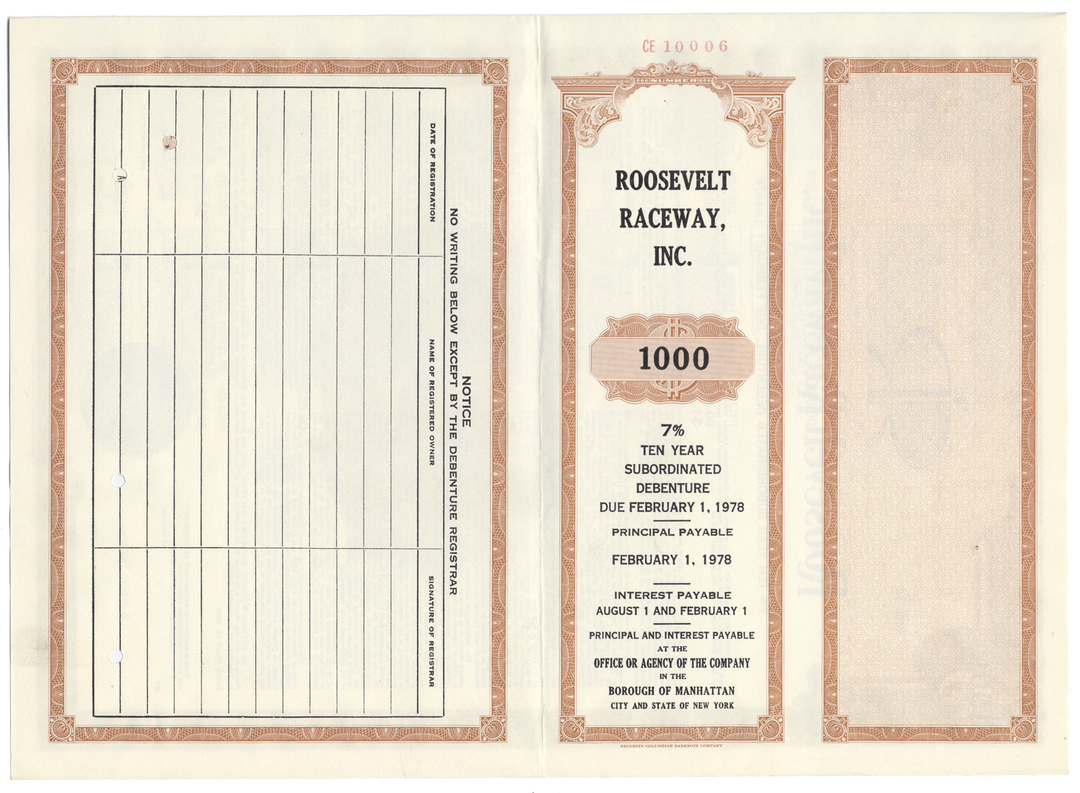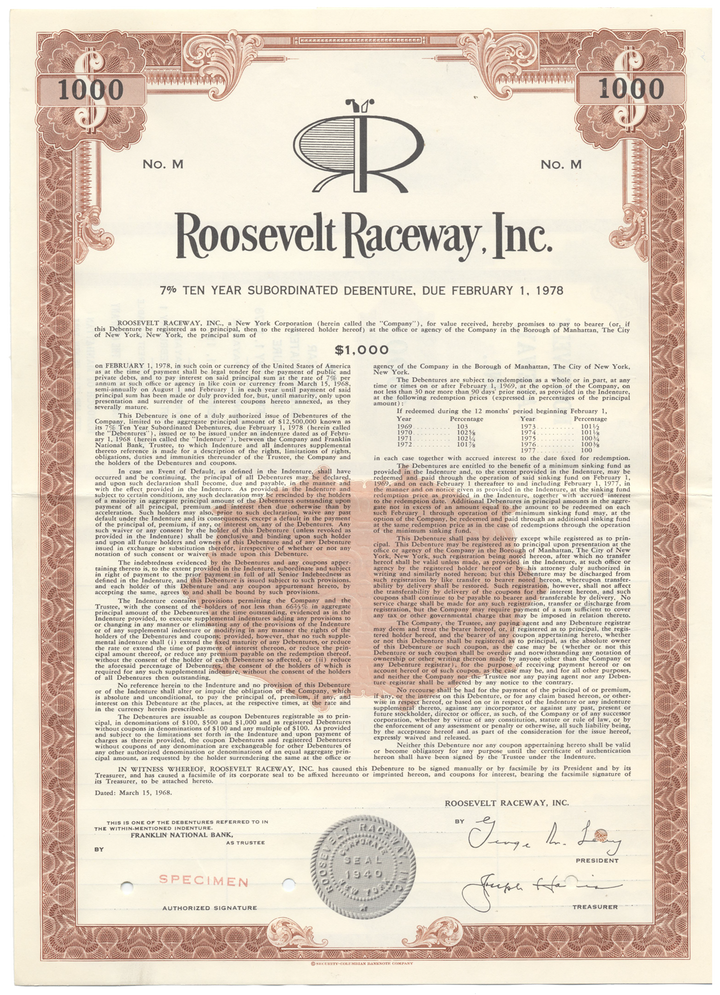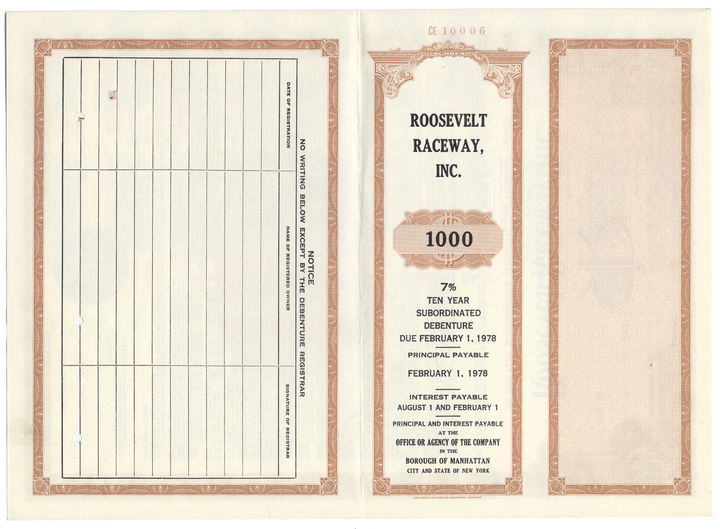Roosevelt Raceway, Inc.
- Guaranteed authentic document
- Orders over $75 ship FREE to U. S. addresses
Product Details
CompanyRoosevelt Raceway, Inc.
Certificate Type
Subordinated Debenture Bond
Date Issued
Specimen, March 15, 1968
Canceled
Yes
Printer
Security-Columbian Bank Note Company
Signatures
Machine printed
Approximate Size
10" (w) by 14" (h)
Images
Show the exact certificate you will receive
Guaranteed Authentic
Yes
Additional Details
NA
Historical Context
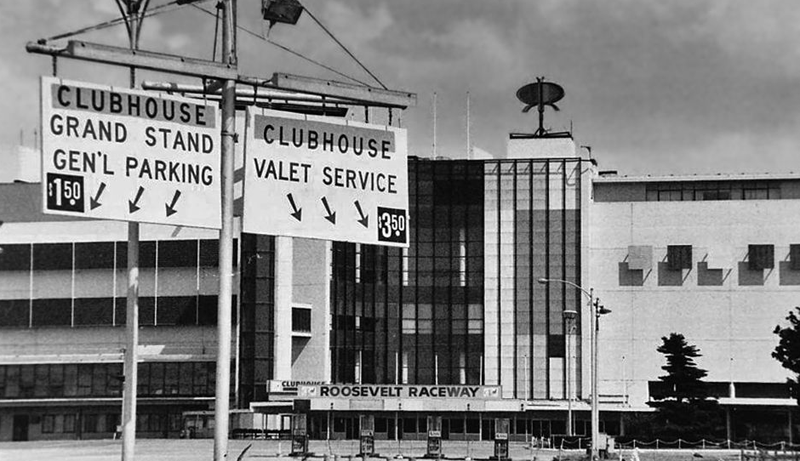
The site of Roosevelt Raceway was part of the Hempstead Plains, located near where the first English Governor of New York, Richard Nicolls, established the "Newmarket Course" in 1664. The Newmarket Course was the first horse racing track in North America (and indeed, the first organized sport of any kind). Before the modern raceway was created, the site was part of the Roosevelt Field Airfield. On the site in 1936, an auto racetrack was created to host the dormant Vanderbilt Cup. The venture proved unsuccessful, and the auto race was only run twice.
The property was first leased in 1939 by a group of investors (Old Country Trotting Association) led by George Morton Levy with the intention of opening a harness racing track. However, unlike previous incarnations of the sport, Levy's track would race at night, with single heat races, in an attempt to bring the "hick sport" to the populous Long Island area. The track opened September 2nd, 1940 with a crowd of 5000 which bet a total of $40,742 and saw the first race won by the horse "Martha Lee." Later that night, Miss June, collapsed and died on the track after winning the fifth race.
In 1942, George Levy was saddled with mounting debt. He would have to raise $20,000 or forfeit the raceway. This loan would prove almost disastrous to Roosevelt Raceway when Levy came under investigation of the Kefauver Committee in the 1950s. In 1944 the Raceway was in dire straits (again) and about to be evicted from the premises for $70,000 back rent, Mr. Levy bargained to purchase the land for the meager sum of $950,000 (satisfied on 5/17/56).
One of the difficulties the sport faced was the start of races, which usually required multiple restarts to make sure each entrant had an equal chance. On May 24, 1946, Levy introduced the mobile starting gate, which eliminated most restart related delays. Attendance quickly boomed. On June 30, 1956 the track would host the inaugural Messenger Stakes, part of the new "Triple Crown of Harness Racing for Pacers". The race was won by Belle Acton, who tied the track record and won $32,320.
In 1957 a new, much larger grandstand was opened, which included such features as dining and air conditioned areas, as well as a new toteboard. The grandstand came to be known as the "Dream Track." On August 20, 1960 attendance was 54,861 for a racing card that included the International Trot, which at the time was the largest crowd to witness a horse race in the United States. One black eye for the track occurred on November 8, 1963, when only two horses finished following a mid-race crash. The race was declared official, which angered many of the 23,127 fans in attendance that night, setting off a riot. First throwing bottles and other debris, the fans then began jumping over the railing, smashing the tote board, and then attacking the judges booth and the police who attempted to interfere. After the fans began to set fires, arriving firemen set their hoses on the rioters to push them back. 15 people were treated for injuries.
In 1984 the site was sold by Madison Square Garden, a subsidiary of Gulf+Western, to a group of investors (Roosevelt Raceway Associates) led by incumbent raceway president Bill Hopkins and investor Charles L. Evans, via $54 million in tax-free bonds issued by the Town of Hempstead Industrial Development Agency. At the time of purchase they promised " . . to successfully operate the Roosevelt Raceway in its existing location and to preserve a traditional source of enjoyment and revenue for the citizens of Hempstead and surrounding communities." But Raceway Associates closed the track in 1988, and became embroiled in a controversy over the bonds, that would lead to an investigation that would include New York Senator Alfonse D'Amato. No one would be found guilty of any legal wrongdoing. At the time of closure, the property was valued at approximately 200 million dollars. The investment group was unable to develop the site, and as the facilities were not maintained, the grandstand and stables began to decay and the track removed. Although shopping centers were soon built on the former parking lots and stable areas, the grandstand would not be demolished until 2002.
Roosevelt Raceway was the first race track to be accepted by the American Stock Exchange, in 1956.
Related Collections
Additional Information
Certificates carry no value on any of today's financial indexes and no transfer of ownership is implied. All items offered are collectible in nature only. So, you can frame them, but you can't cash them in!
All of our pieces are original - we do not sell reproductions. If you ever find out that one of our pieces is not authentic, you may return it for a full refund of the purchase price and any associated shipping charges.






